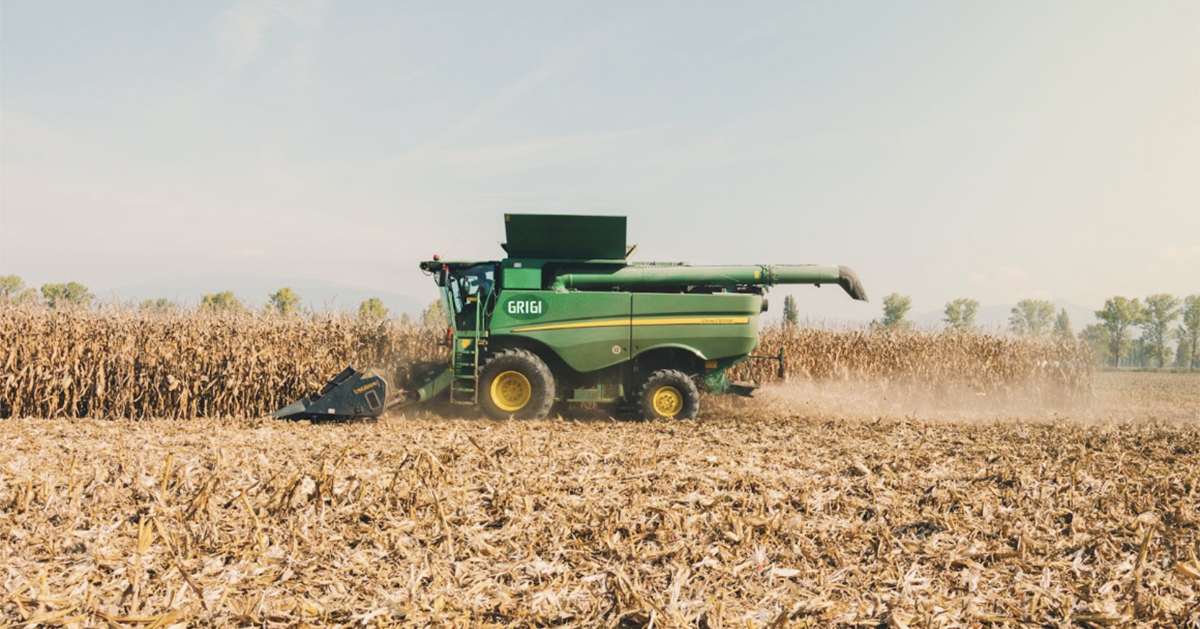August 8, 2023
Looking at Pulse Atlas Data and talking to trade experts, Luke Wilkinson gives an overview of the outlook for Argentina’s pulses after a drought-impacted harvest.


With the autumn harvest in Argentina complete, it is clear that a second year of La Niña has severely impacted crop yields, inflicting levels of drought not seen for 60 years.
Record droughts have led to a second year of reduced production but this year’s lack of carry-in stocks make the situation more concerning, says Nico Karnaubi, Vice-President of the Chamber of Pulses of Argentina (CLERA): “This year's harvest – particularly with regards to beans – is even worse than last year’s. What saved us last year was that we had carry-in, but this year we have zero carry-in.”
The extent of the drought across all growing zones can be seen in the fall in soy production and exports, explains Karnaubi. “As soybeans are planted in the north, south, and center of the country, this year's reduction of around 50-60% from an average year is a strong analytical indicator for the severity of the drought.”
According to the latest figures from the Pulse Atlas, the total percentage of bean production (alubia, black, mung, dark red kidney, light red kidney, and cranberry) is down by 19% compared to 2022.
One of the positives from this year’s harvest is in the quality and size of the product, says Karnaubi: “If we compare this year and last year in terms of quality, there is one positive: the beans we’ve harvested are bigger – we're not exactly sure why, but the average size is definitely bigger than last year.”
Lucas Genero, General Manager of pulses and commodities trader, Agrofin, explains the impact of the production drop on traders: “It means prices are firm and negotiations are slow, as producers are trying to find any way possible to stretch their numbers to cover their costs. From a sales standpoint, it's not good for the dynamism of the market when prices are firm – nobody wants to end up buying at high prices.”
The biggest hit to pulse production as a result of this year's drought was taken by white alubia beans. Despite unchanged acreage from 2022 (170,000 ha), production has dropped 32.4% year-on-year, from 214,500 MT to 145,000 MT. 25,000 ha of seeded alubia beans were abandoned and estimated yields dropped from 1.3 to 0.9 t/ha.
Alubia bean supplies will be tight out of Argentina – only 60,370 MT is thought to be available for export compared to 152,370 MT in 2022. This drop in supply is down to a combination of poor production and zero carry-in stocks this year, explains Lucas Genero:
"From the year 2021 to 2022 there was already a drop in production of 100,000 MT year-on-year, but the drop wasn't as obvious because a lot of the exports weren’t from the harvest, but rather from the previous year – the strong carry-in meant that we don't have the same level of carry-in to cover the gap left in stocks. This means that the volume for the market is smaller and that prices will remain firm."
Carry-in stocks moving into 2024 are estimated to be around 103,910 MT.
Nico Karnaubi expects robust prices this year:
“In my opinion, white bean prices will be very, very strong throughout the whole season. Right now I don't think the market really believes the Argentine situation – people are on holidays and thinking about other things. I don’t know if it will be in two months, four months, or six, but the market will feel the big gap in alubias created by this reduced harvest. Depending on the size, I expect prices to be between $1350-1430/t.”
Black beans have the highest acreage of any pulse in Argentina this year – 180,000 ha seeded in total, of which 27,000 ha were not harvested or abandoned. Production has dropped, although not quite as dramatically as alubia beans. Total production this year stands at 153,000 MT – a 16.3% drop year-on-year.
The big disparity is in what will be available for the international market. Exports to date are around 50,860 MT – a massive 175% drop compared to the 139,720 MT exported by this point in 2022. Carry-in for 2024 will be 134,730 MT.
“It’s important to remember that Brazil has had a big black bean crop,” says Nico Karnaubi, “but black bean prices at the border with Brazil could be between $700-$750/t ”
For other destinations Lucas Genero suggests costs will be higher: “Prices will be around $2000-2100/t — cost and freight.”
A success story this year amongst the difficulties have been cranberry beans and light red kidney beans, both of which have increased their acreage and their production since last year. Cranberries made a production jump of 36.4% from 39,680 MT to 54,110 metric tons, while light red kidneys made a smaller jump of just over 18% from 18,080 MT to 21,370 MT.
A success story this year amongst the difficulties have been cranberry beans and light red kidney beans, both of which have increased their acreage and their production since last year.
The reason for this, says Lucas Genero, is the opportunism of farmers looking for a crop that could help salvage losses created by drought: "The reason for the rise in cranberries and light red kidneys is that a lot of area seeded with alubia beans was lost early due to the drought. They were seeded at the beginning of February and a lot of area was already lost by the end of March due to a lack of moisture.”
"When new rains fell at the end of March, farmers faced a problem – if they seed more alubia beans, which have a cycle almost 30 days longer than cranberries or light red kidneys, they could risk them being lost due to frost. Instead, the combination of good prices at the time and a shorter cycle (just under 30 days less than alubias) gave farmers a strong incentive to change the lost alubia areas over to cranberries and light red kidneys, which they did.”
Another factor is the location of the crops, says Nico Karnaubi: “Cranberry beans are located in a very special area in the north of Salta, near Bolivia. That area received more rain, which is why the average yield is better than the other beans – around 25/25% higher overall.”
Moving into 2024, Argentina is predicted to have a carry-in of 44,290 MT of cranberry beans, and 21,110 MT of light red kidneys.
A drop in yield from 1.45 t/ha to 1.15 t/ha has left dark red kidney production reduced by over 10,000 MT. This will tighten the stock available for export considerably, with dark reds estimated at 11,250 MT – just under 75% down from the previous year's total of 43,810 MT.
Carry-in was non-existent at the beginning of the harvest, and carry-in moving into 2024 is predicted at 35,580 MT.
Harvested area and yield for mung beans has taken a small hit this year, with a 4000 ha drop in acreage and 0.2 t/ha drop in yield. This has led to an overall decrease in production of 22.6% – 81,400 MT to 63,000 MT.
Carry-in coming into 2023 was zero, but carry-out into 2024 is estimated at 134,730 MT.
"For green peas," says Lucas Genero, "we’re looking at around 60-70,000 ha – with normal yields we may see around 140,000 tons of production with between 60-70,000 tons available for export. Yellow peas should have between 25-35,000 ha with between 50-60,000 tons of production."
Chickpea acreage has shot up considerably this year, says Genero: “Last year there were around 40-45,000 ha of chickpeas seeded, whereas this year we’re at around 100,000 ha, and at the moment the crop looks good.”
“Last year there were around 40-45,000 ha of chickpeas seeded, whereas this year we’re at around 100,000 ha, and at the moment the crop looks good.”
At a yield similar to the 2022 crop (1 t/ha) – this acreage would increase Argentina’s chickpea production year on year by almost 70%.
The upcoming national elections will mean a year of uncertainty ahead for the Argentinian economy, but many farmers and traders will be hoping that whoever comes into power will be able to arrest the devaluation of the peso and hyperinflation – currently at just above 142%.
“Exporters and farmers could benefit from the government accelerating the valuation of the peso – this is the second year in a row where the exchange rate is lower than the devaluation process,” says Nico Karnaubi.
“There are three things to consider for the next seedings: the weather, the political situation, and the markets. If those things are positive then I think the farmers will seed as many pulses as they can – within the land limitations.”
“Last year the high commodity prices meant a lot of summer bean acreage was replaced by corn and some winter chickpea acreage was replaced by wheat,” explains Lucas Genero.
“Grasses help sustain the soils, so the farmers took the opportunity while prices were high. Considering that commodity price inflation has now come down and that pulse prices are higher than last year, I think it’s likely that pulse acreage will rise provided the climatic conditions are favorable.”
READ THE FULL ARTICLE
Argentina 2023 harvest / Argentina alubias / Argentina black beans / white beans / drought / kabuli chickpeas / Lucas Genero / CLERA / Nico Karnoubi
Disclaimer: The opinions or views expressed in this publication are those of the authors or quoted persons. They do not purport to reflect the opinions or views of the Global Pulse Confederation or its members.